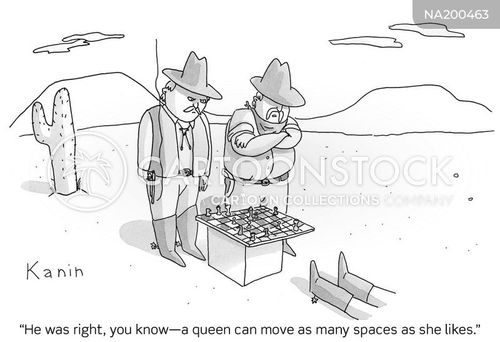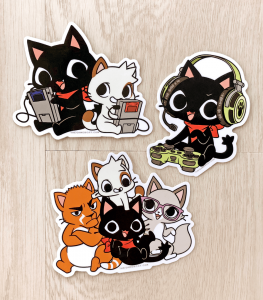Cats is a 2019 musical fantasy film based on the 1981 Tony Award-winning stage musical of the same name by Andrew Lloyd Webber, which in turn was based on the poetry collection Old Possum's Book of Practical Cats (1939) by T.
- Origin and history of cats
- General features and special adaptations
- Behaviour
- Genetics
- 'Im so glad you came.' Says a beautiful she- cat, approching you from the small camp ahead. 'My name is Firefang, Im the Stormclan deputy.' She is so colorful, your eyes get fuzzy and confused looking the scarred she- cat in the face. You can see and smell other cats bustling around in the camp, ones of.
- Cats is a sung-through musical composed by Andrew Lloyd Webber, based on the 1939 poetry collection Old Possum's Book of Practical Cats by T. Eliot.It tells the story of a tribe of cats called the Jellicles and the night they make the 'Jellicle choice,' deciding which cat will ascend to the Heaviside Layer and come back to a new life. The musical includes the well-known song 'Memory' as.
Our editors will review what you’ve submitted and determine whether to revise the article.
Join Britannica's Publishing Partner Program and our community of experts to gain a global audience for your work!Cat, (Felis catus), also called house cat or domestic cat, domesticated member of the family Felidae, order Carnivora, and the smallest member of that family. Like all felids, domestic cats are characterized by supple low-slung bodies, finely molded heads, long tails that aid in balance, and specialized teeth and claws that adapt them admirably to a life of active hunting. Cats possess other features of their wild relatives in being basically carnivorous, remarkably agile and powerful, and finely coordinated in movement.
It is noteworthy that the ancestors of the other common household pet, the dog, were social animals that lived together in packs in which there was subordination to a leader, and the dog has readily transferred its allegiance from pack leader to human master. The cat, however, has not yielded as readily to subjugation. Consequently, the house cat is able to revert to complete self-reliance more quickly and more successfully than most domesticated dogs. For an account of the relationship of the family of cats to other carnivores, seecarnivore.
Origin and history of cats
The “cat pattern,” established very early in the evolution of modern mammals, was a successful one: early cats were already typical in form at a time when the ancestors of most other modern mammalian types were scarcely recognizable. They first appeared in the early Pliocene Epoch (5.3 to 3.6 million years ago), and they have continued with remarkably little change into modern times.
Domestication
Although the origin of the domesticated cat is hidden in antiquity, studies involving mitochondrialDNA (mtDNA) suggest that there have been two lineages of Felis catus. One lineage (F. silvestris silvestris) appeared in Asia Minor possibly as early as 6,400 years ago and dispersed northward and westward into Europe. The other lineage appeared in Egypt sometime between 6,400 and 1,000 years ago before spreading throughout the Mediterranean (possibly through human introduction) along paths that paralleled the region’s trade routes. Cats of both lineages continued to breed with the African wildcat (F. silvestris lybica) during their respective dispersals.
The earliest known association between cats and humans dates possibly as far back as the origins of agriculture in the Middle East, about 9,500 years ago. A cat skeleton accompanying that of a human dated to that time was discovered in southern Cyprus. Although some sources note that this finding suggests that cats had undergone some degree of domestication in that location, other sources (citing evidence that the cat genome did not differ that much from that of the African wildcat during this period) argue that cats may have domesticated themselves by choosing to live in human-altered landscapes. Fossil evidence found in China dating to approximately 5,300 years ago revealed that cats similar in size to modern domestic cats fed on small grain-eating animals, such as rodents, and millet in agricultural settings. Although research suggests that these cats were actually leopard cats (Prionailurus bengalensis), which were replaced by modern domestic cats (F. catus) before 3000 bce, this discovery suggests that humans allowed cats to hunt mice and other rodents that threatened grain stores and possibly fed the cats or allowed them to consume leftover food.
Although the cat was proclaimed a sacred animal in Egypt in the 5th and 6th dynasties (c. 2465–c. 2150 bce), it had not necessarily been domesticated at that time. It is probable that the ancient Egyptians partnered with the cat because they realized its value in protecting granaries from rodents. Their affection and respect for this predator led to the development of religious cat cults and temple worship of cats. There are no authentic records of domestication earlier than 1500 bce, however.
Cats have long been known to other cultures. Wall tiles in Crete dating from 1600 bce depict hunting cats. Evidence from art and literature indicates that the cat was present in Greece from the 5th century bce, and tiles featuring cats appeared in China from 500 bce. In India cats were mentioned in Sanskrit writings around 100 bce, while the Arabs and the Japanese were not introduced to the cat until about 600 ce. The earliest record of cats in Britain dates to about 936 ce, when Howel Dda, prince of south-central Wales, enacted laws for their protection.
Even though all cats are similar in appearance, it is difficult to trace the ancestry of individual breeds. Since tabbylike markings appear in the drawings and mummies of ancient Egyptian cats, present-day tabbies may be descendants of the sacred cats of Egypt. The Abyssinian also resembles pictures and statues of Egyptian cats. The Persian, whose colouring is often the same as that of mixed breeds (although the length of hair and the body conformation are distinctive), was probably crossed at various times with other breeds. The tailless Manx cat, like the hairless Sphynx cat and curly-coated Devon Rex, is a mutation. The ancestry of Persian and Siamese cats may well be distinct from that of other domestic breeds, representing a domestication of an Asian wild cat. In fact, nothing is known of the ancestry of the Siamese types, and there is no living species of Asian cat that could have served as ancestor.
Associations with human culture
The cat has long played a role in religion and witchcraft. In the Bible, “cat” is mentioned only in the apocryphalLetter of Jeremiah. The cat figured prominently in the religions of Egypt, the Norse countries, and various parts of Asia. The Egyptians had a cat-headed goddess named Bast (or Bastet). Thousands of cat mummies have been discovered in Egypt, and there were even mouse mummies, presumably to provide food for the cats. Often the cat has been associated with sorcery and witchcraft, and the superstitions regarding cats are innumerable. Throughout the ages, cats have been more cruelly mistreated than perhaps any other animal. Black cats in particular have long been regarded as having occult powers and as being the familiars of witches.
The cat is a familiar figure in nursery rhymes, stories, and proverbs. The English legend of Dick Whittington and his cat is a particular favourite. The writers Théophile Gautier and Charles Baudelaire paid it homage, and in the 20th century Rudyard Kipling, Colette, and T.S. Eliot wrote of cats, and British composer Sir Andrew Lloyd Webber created the popular stage production Cats.
- related topics
- Size
- Smallest
- Small
- Medium
- Large
- Largest
- Coat
- Hairless
- Short Hair
- Medium Hair
- Long Hair
- Characteristics
- Hypoallergenic
- Cutest
- Fluffy
- Best
- House
- Rare
- Wild
- Exotic
- Color
- White
- Black
- Grey
- Blue
Popularity2018
Hypoallergenic
No
HypoallergenicOrigin: United States
See Details >Gentle
Quiet
Friendly
Easygoing
..20
PoundsNo
HypoallergenicOrigin: United States
See Details >Quiet
Lovely
Warm pure
Sweet
..14
PoundsNo
HypoallergenicOrigin: United Kingdom
See Details >Easy Going
Family
Loyal
Patient
..20
PoundsNo
HypoallergenicOrigin: Iran (Persia)
See Details >Gentle
Sensitive
Quiet
Ability
..14
Cats Movie
PoundsNo
HypoallergenicOrigin: United States
See Details >Gentle
Intelligent
Independent
..18
Pounds
No
HypoallergenicOrigin: United States
See Details >Active
Curious
Easy Going
Playful
 ..
..15
PoundsYes
HypoallergenicOrigin: United Kingdom
See Details >Loyal
Playful
Social
..10
PoundsYes
HypoallergenicOrigin: Canada
See Details >Gentle
Quiet
Friendly
..12
PoundsNo
HypoallergenicOrigin: United Kingdom
See Details >Affectionate
Intelligent
Loyal
Playful
..11
PoundsNo
HypoallergenicOrigin: Egypt
See Details >Energetic
Independent
Intelligent
Gentle
..10
PoundsYes
HypoallergenicOrigin: United States
See Details >Curious
Intelligent
Social
Playfulness
..10
PoundsYes
HypoallergenicOrigin: Thailand
See Details >Lively
Active
Amart
Clever
..15
PoundsNo
HypoallergenicOrigin: Norway
See Details >Curious
Our song lyrics. Intelligent
Loving
Playful
..16
PoundsYes
HypoallergenicOrigin: Cornwall, England
See Details >Playful
Affectionate
Curious
Intelligent
..9 Assassin's creed 3 download game for pc.
PoundsYes
HypoallergenicOrigin: United States
See Details >Agile
Family
Inquisitive
Lively
..18
PoundsYes
HypoallergenicOrigin: Russia
See Details >Easy Going
Intelligent
Loyal
Playful
..11
PoundsYes
HypoallergenicOrigin: Russia
See Details >Agile
Intelligent
Ragdoll Cats
Loyal
Playful
..16
PoundsYes
HypoallergenicOrigin: Burma, Thailand
See Details >Curious
Family
Intelligent
Interactive
..12
PoundsNo
HypoallergenicOrigin: France
See Details >Gentle
Kind
Day twelvesugars legacy stables. Gentle
..15
Pounds
No
HypoallergenicOrigin: Canada
See Details >Cats & Playerswarrior Cats The Game Unblocked
Curious
Intelligent
Lively
Playful
..12
Pounds